Fu’s Needling therapy not only has standardized operating procedures but also clearly defined indications. Practitioners of Fu’s Needling are familiar with the “Fu’s Needling Tree,” where each indication has been extensively validated through clinical practice. However, during the clinical application of Fu’s Needling, the absence of a disease on the Fu’s Needling Tree does not mean it cannot be treated with this method. Some attempts may yield unexpected or even pleasantly surprising therapeutic results.

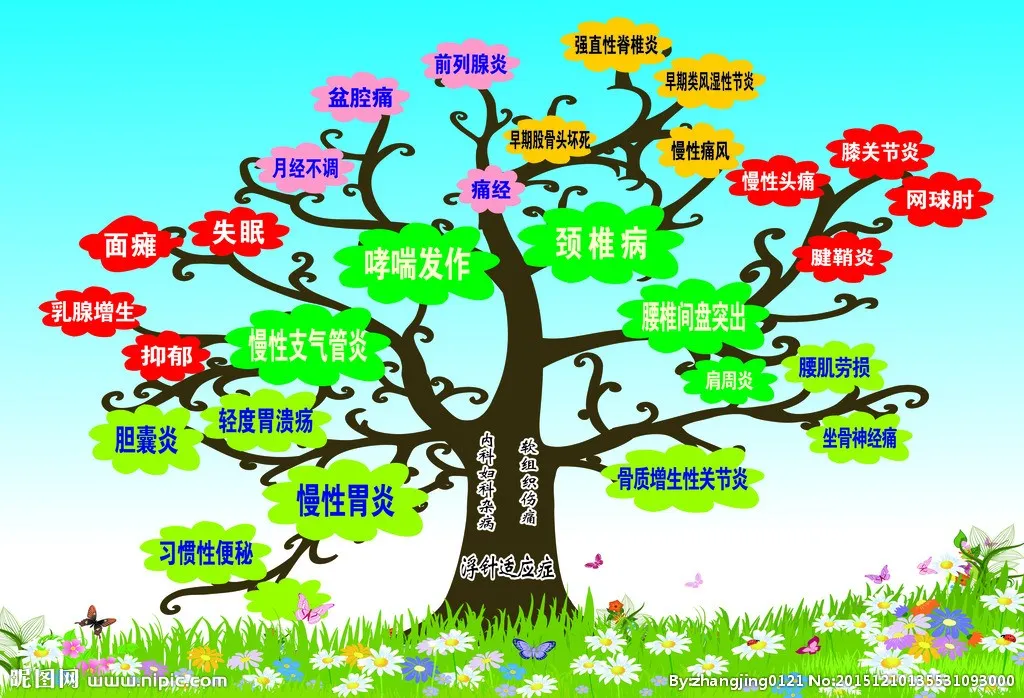
Last year, I treated a patient who had experienced subarachnoid hemorrhage due to a car accident, resulting in right oculomotor nerve paralysis. Clinically, the patient exhibited typical symptoms of oculomotor nerve paralysis, such as ptosis and impaired eye movement. After the condition stabilized and high-pressure oxygen therapy proved ineffective, a neurologist referred the patient to traditional Chinese medicine for acupuncture treatment. After more than 30 sessions of conventional acupuncture treatment without any progress, a colleague recommended that the patient seek Fu’s Needling therapy from me.
I had no prior experience with such brain nerve injuries and could only explain to the patient that we would try three treatment sessions as a course to observe the efficacy. To my surprise, after the first Fu’s Needling treatment, there was an immediate effect, with a small gap of about 0.1 mm visible in the right eye during the opening motion. After the second and third treatments, the patient’s ability to voluntarily open the eye gradually widened to about 2 mm, and after five treatments, it reached 5 mm. The range of motion in the right eye also significantly increased from the initial assessment, with eye adduction exceeding the midline. Fu’s Needling therapy achieved remarkable progress in a short period. The patient was very happy and became more confident in continuing the treatment.
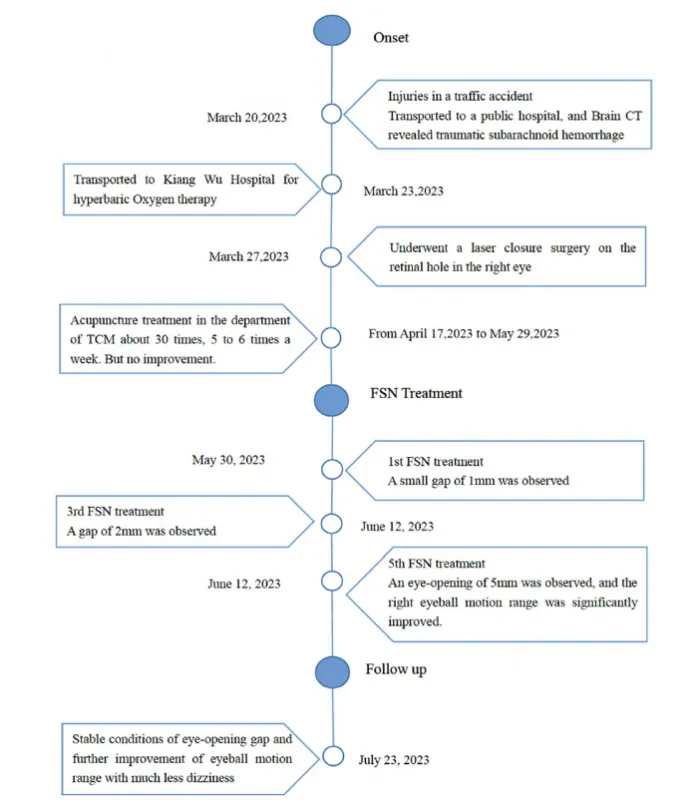
As a physician, I was pleasantly surprised by such effective feedback while also taking the opportunity to delve deeper into the literature on isolated oculomotor nerve paralysis. I aimed to understand the potential mechanisms by which Fu’s Needling could achieve rapid and effective results. Each treatment session was documented with photographs, allowing for a visual comparison of the patient’s clinical symptom improvements throughout the treatment process. In addition to sharing my findings with colleagues in the department through a PowerPoint presentation, I organized the information into a case report.
Through my literature review, I found that isolated oculomotor nerve paralysis following cranial injury is clinically rare, and there are few reports on treatment methods. As a result, I decided to translate the report into English and submit it for consideration in an SCI journal.
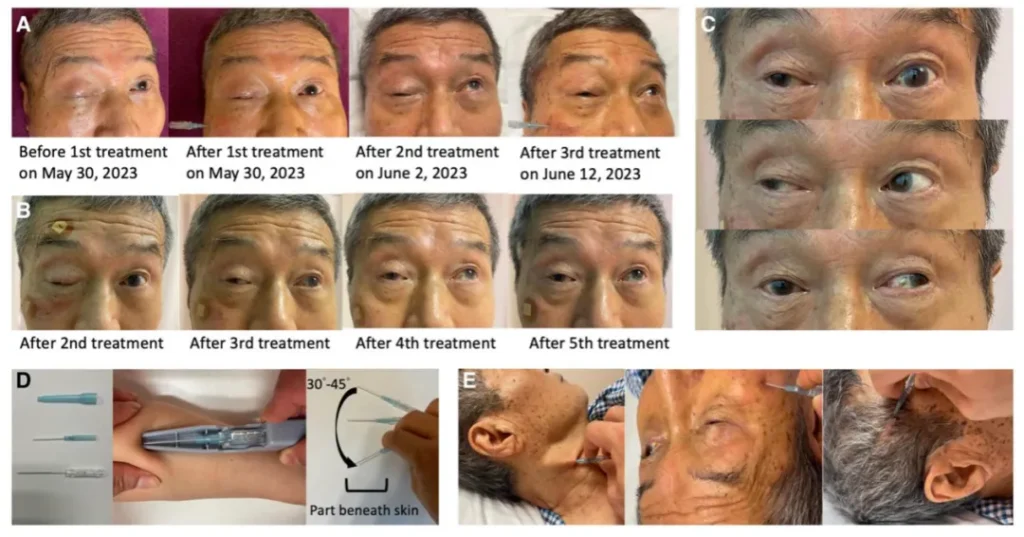
I initially submitted the manuscript to “Medicine,” where it quickly passed the editorial review stage. However, it was unfortunately rejected during the external review process. Following that, I continued to try other journals, including “CNS Neuroscience & Therapeutics,” “European Journal of Medical Research,” and “American Journal of Physical Medicine & Rehabilitation,” but none of them passed the initial review.
Under the guidance and reminders of Professor Sun Jian, and with the thorough revisions from Professor Zhou Liwei, I came to realize that the numerous shortcomings and issues in my writing were the fundamental reasons behind the repeated rejections of my submissions.
I would like to express my gratitude to Professor Zhou for his guidance and revisions, which significantly improved the quality of the manuscript. Recently, I submitted the article titled “Benefits of Fu’s Subcutaneous Needling Treatment for Isolated Oculomotor Nerve Paralysis After Traumatic Brain Injury: A Case Report” to “QJM – An International Journal of Medicine.” It was quickly accepted and published online. Although this journal is classified as a Q4 in medicine, it has an impact factor of 7.3, which will help more international colleagues understand and recognize Fu’s Needling. (Article link: https://doi.org/10.1093/qjmed/hcae174)

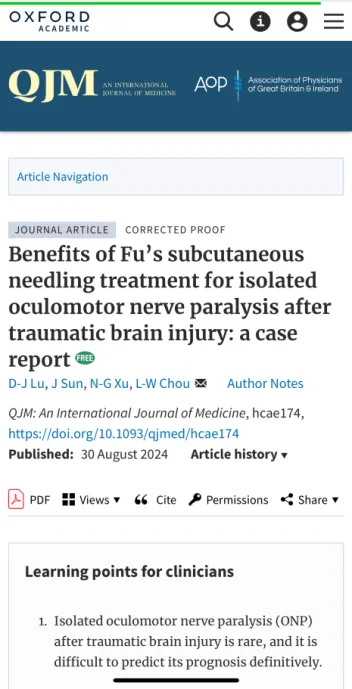
Looking back, it has been seven years since Fu’s Needling therapy was introduced in Macau. Initially, I relied on referrals from colleagues in other specialties and spent a considerable amount of time explaining the treatment to patients. Now, patients proactively schedule appointments specifically to seek Fu’s Needling therapy. In most cases, they mention that they learned about Fu’s Needling through recommendations from family members, colleagues, or friends. This reflects the tangible clinical efficacy of Fu’s Needling, which has gradually built a positive reputation and feedback among patients.


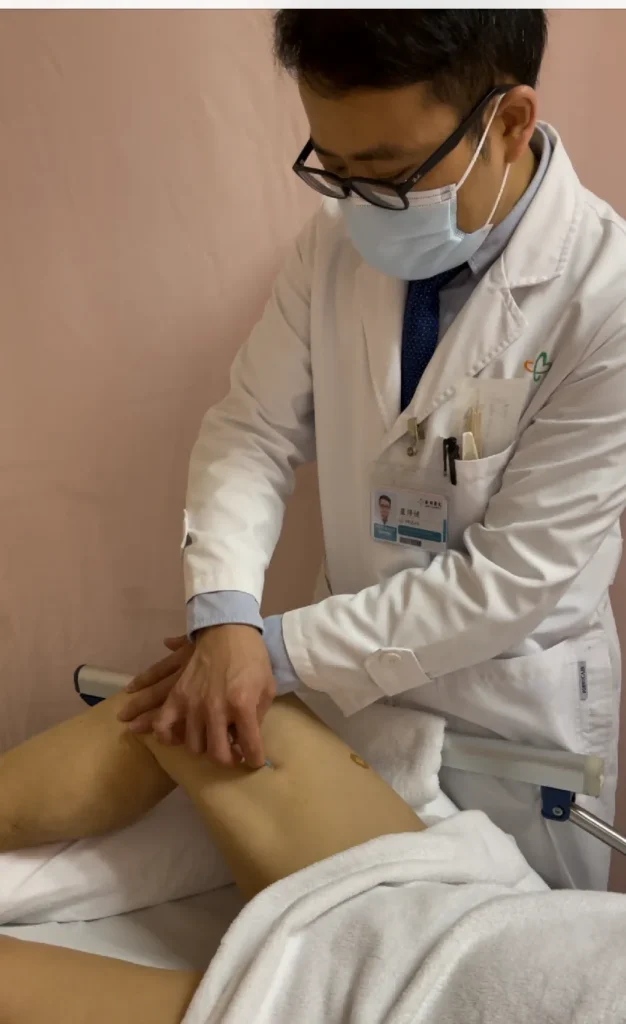
On another front, in a new environment like Macau, the traditional Chinese medicine department in a predominantly Western medicine hospital faces challenges in promoting Fu’s Needling therapy due to inherent biases held by Western medical colleagues. These biases include an overreliance on individual physician experience, a lack of evidence-based medicine, and concerns about the efficacy of treatment being influenced by the placebo effect, among others.
To overcome these stereotypes, I have been trying, in addition to the conventional approach of lectures and presentations, to promote communication and understanding through reviewing and summarizing the clinical efficacy of diseases treated effectively with Fu’s Needling, as well as organizing typical case studies. I have aimed to present this research-based approach in a manner that Western medical colleagues can understand and accept, and I have submitted related articles to medical journals.
I have successively submitted and published articles in the local medical journal “Mirror Lake Medicine,” including “Clinical Observation of 30 Cases of Fu’s Needling Therapy for Trigger Finger Tendon Stenosing Tenosynovitis,” “Experience and Mechanism Discussion of Fu’s Needling Treatment for Carpal Tunnel Syndrome,” and “Clinical Observation of 30 Cases of Fu’s Needling Therapy for Knee Osteoarthritis,” which received the second prize at the biennial academic conference of “Mirror Lake Medicine.”
Additionally, I published several articles in the American English journal “International Journal of Clinical Acupuncture,” including “Fu’s Subcutaneous Needling: Three Cases,” “Fu’s Subcutaneous Needling: A Difficult Case of Shoulder Peri-Arthritis,” “A Case of Viral Erythema Related to Covid-19 Infection Treated by Fu’s Subcutaneous Needling,” and “Clinical Observation of 30 Cases of Knee Osteoarthritis Treated with FSN Therapy.”

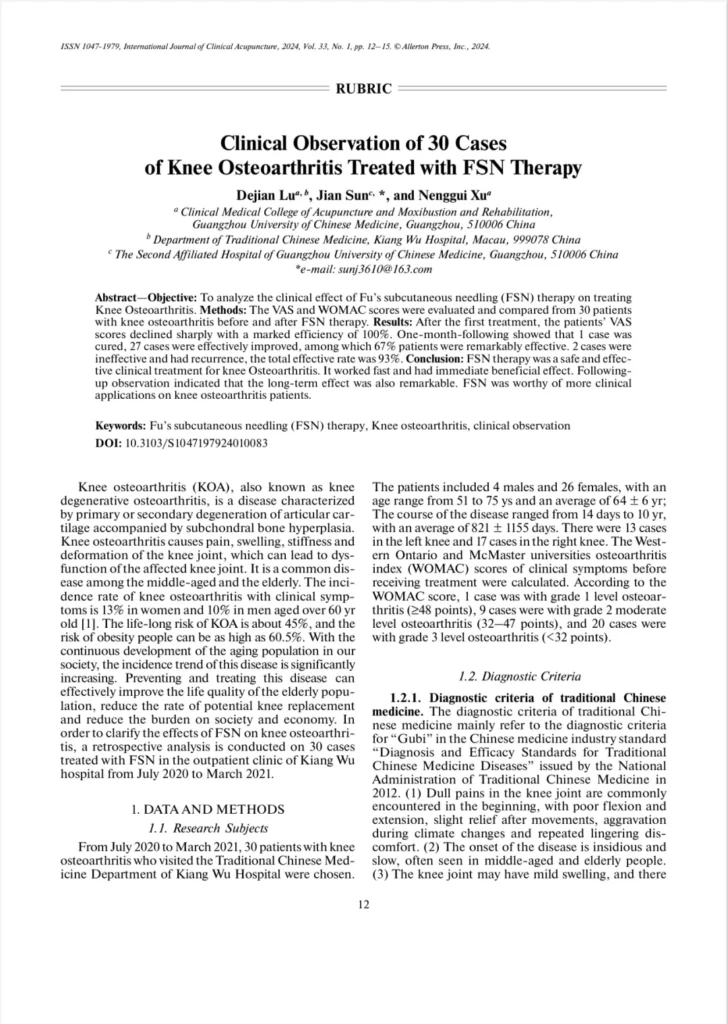
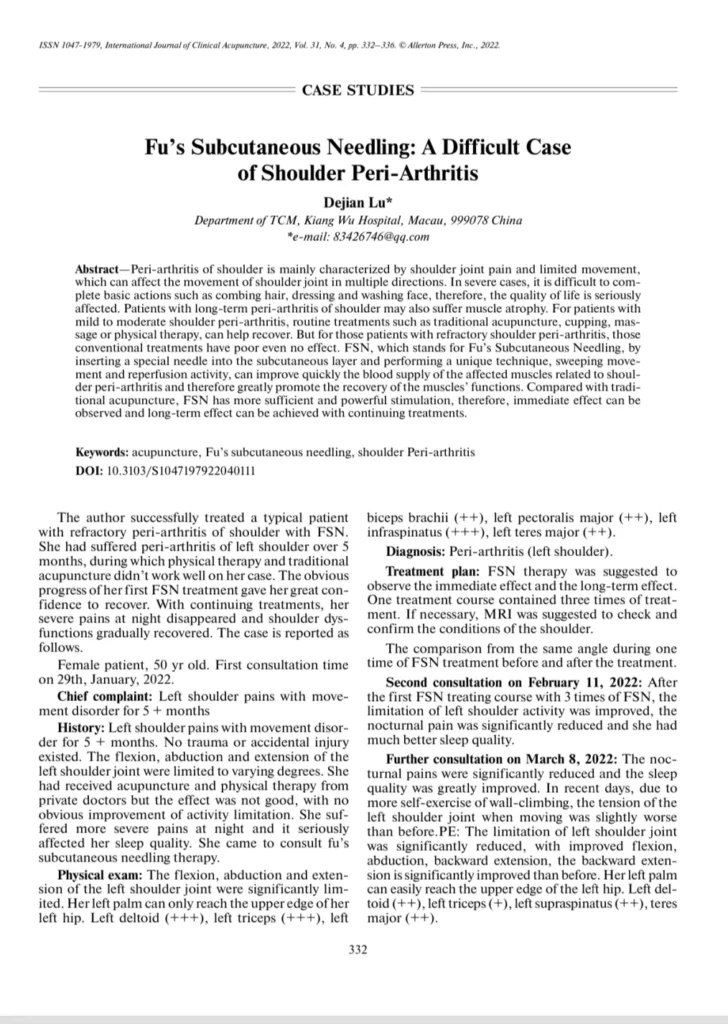
Although the process of submitting to SCI journals was challenging, it allowed me to gain a deeper understanding of the submission requirements of different journals and to recognize many shortcomings in the quality of my writing. I especially benefited from the guidance of Professor Zhou Liwei! I hope this is just the beginning and that I will have the opportunity to express and publish the advantageous therapeutic effects of Fu’s Needling in article form in the future.

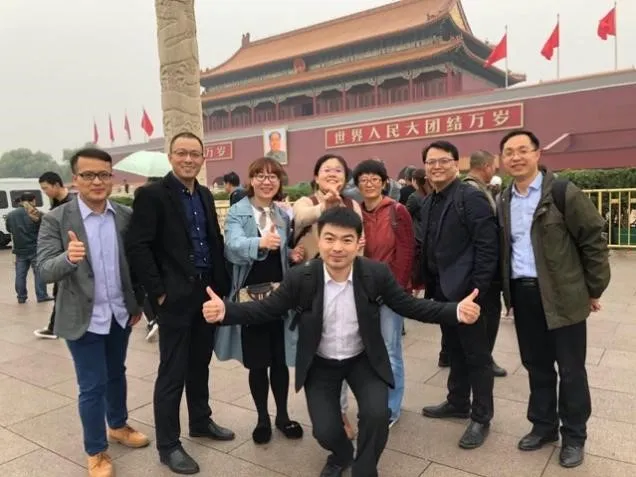




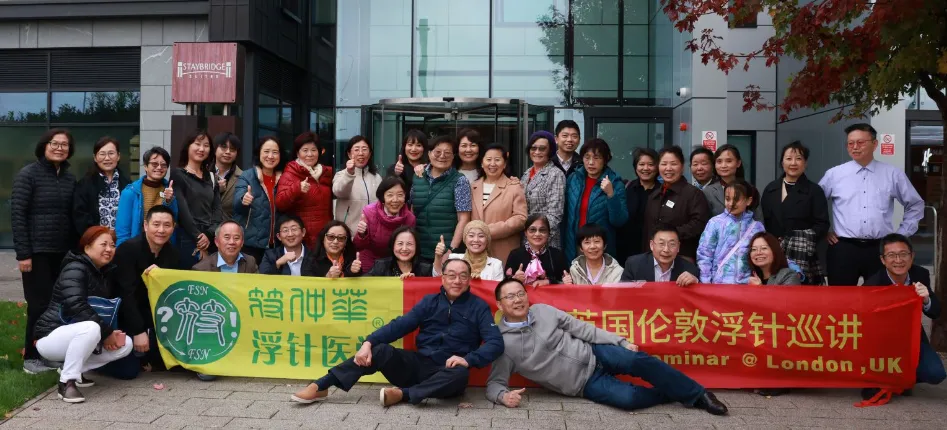


Leave a Reply